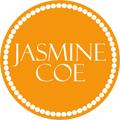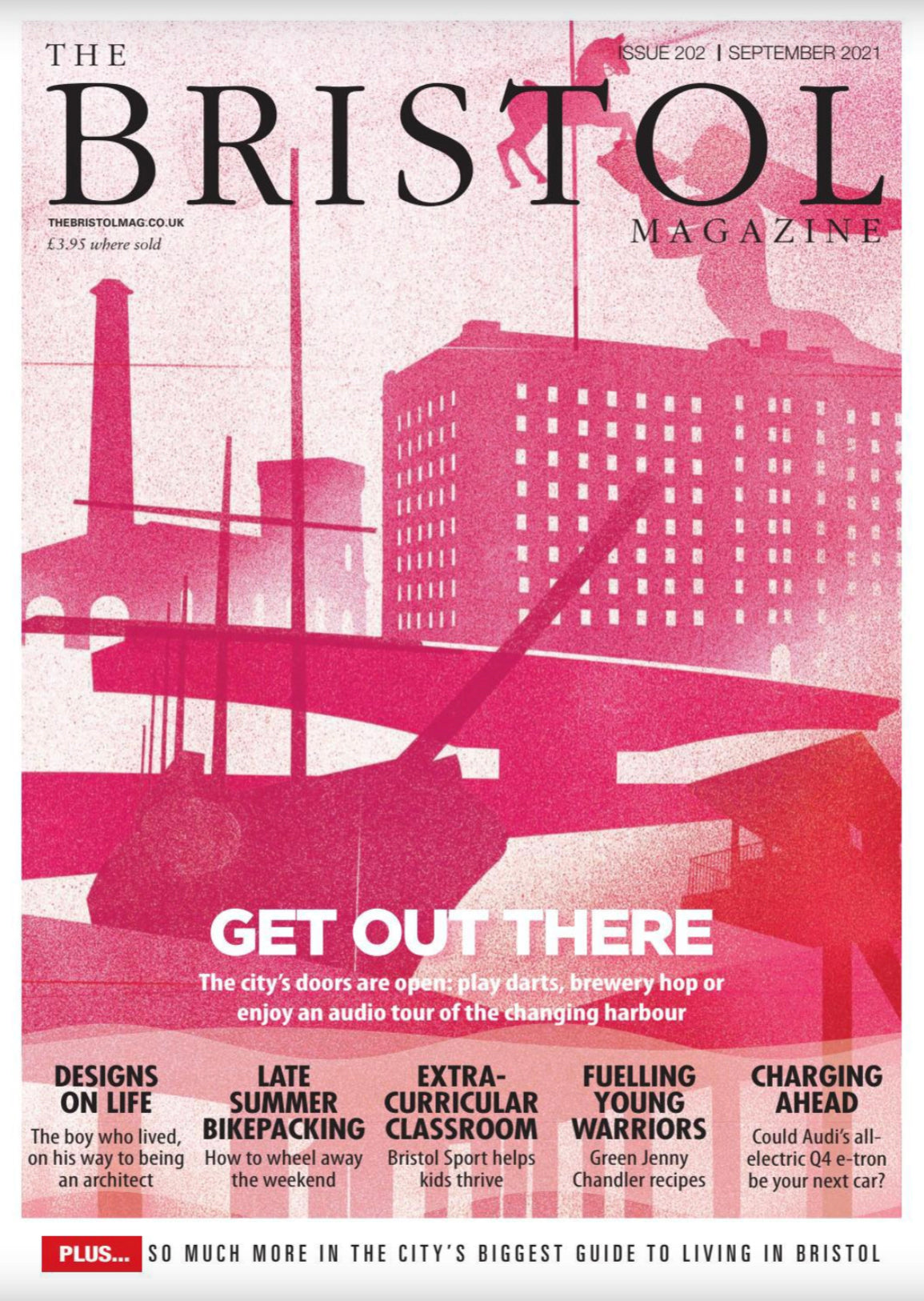September Issue 2021

A new show at Europe’s only Native American art gallery – which needs our help now it’s future is under threat – is exploring how art can help heal historical trauma and aid reconnection with heritage
West Country-based artists Melinda Schwakhofer (Muscogee and Austrian-American) and Jasmine Coe (Wiradjuri-British) are on a journey to reconnection with their Indigenous heritage through their work, with hopes that their experiences will resonate with people of mixed race who have grown up with a disconnect to one side of their heritage, as well as myriad other art lovers, regardless of ethnicity. Ahead of their show at Rainmaker – currently crowdfunding for a new home due to the gallery space being under new ownership – they give us a deeper insight into their process and how it is informed by family history.
TBM: What sort of projects are you working on at the moment?
Jasmine: This year I decided to develop my art by exploring how my work can evolve into fashion and design. Having explored the idea of wearable art by designing silk scarves, I am now creating slip dresses using my designs. It has been important to find a fabric that aligns with the values of my art in being as sustainable and eco-friendly as possible while being as flattering and beautiful as silk.
Melinda: A large art quilt and a smaller hand-stitched piece – both called Pelofv (the Mvskoke word for ‘wooded area with a creek running through it’). The inspiration is a synthesis of two landscapes: Ocmulgee (now Georgia, USA), the homelands of the Mvskoke, and Dartmoor where I now live. I’m also making jewellery from buckskin which I tanned from scratch using English red deer hide, and I’ve started a hand-stitching project which involves eco-dyeing natural fibre thread and fabric using Yaupon holly. Tea brewed from this plant has been drunk for thousands of years by Southeastern Woodlands Nations, including the Mvskoke. I’ll be using the resulting materials in art that depicts Southeastern iconography and explores what it means to be a Mvskoke person living in the UK.
Tell us more about how your heritage informs your art.
Jasmine: My heritage is Wiradjuri (Aboriginal) on my father’s side and British on my mother’s side. I grew up in the UK and only went to Australia in 2016 to meet my father and connect to my Wiradjuri heritage. I studied fine art at Bath Spa University where I painted portraits. Coming back from Australia, painting was a familiar place where I could safely process and continue my connection to my heritage. My art now celebrates and reinstates the values I have learnt from my Wiradjuri heritage by painting experiences or personal themes. One lesson that has stuck with me is the act of ‘caring for country’. I try to uphold this through symbolism. Honeybees feature a lot within my work as they act as a personal reminder of the importance of balance. They are an example of collective energy, community and the strength of working together with nature.
Melinda: I use cultural iconography relevant to the Mvskoke in much of my work. Since 2008 I have been creating a body of work called Mvskoke Journey which has helped me come to terms with the devastating effects of the historical trauma handed down through my Native American family line. I also have a profound connection to the natural world, especially when viewed through a Mvskoke lens. When I learned to tan buckskin I felt deeply connected to my Mvskoke foremothers who, traditionally, would have made buckskin. Much of my art is informed by the Mvskoke way of looking at the world. In this view, each person exists in this place that sits between the Upper and Lower Worlds which are always in a contest with each other. As a Mvskoke artist I feel it’s very natural for me to synthesise and balance these different worlds – to bring harmony to chaos.
-
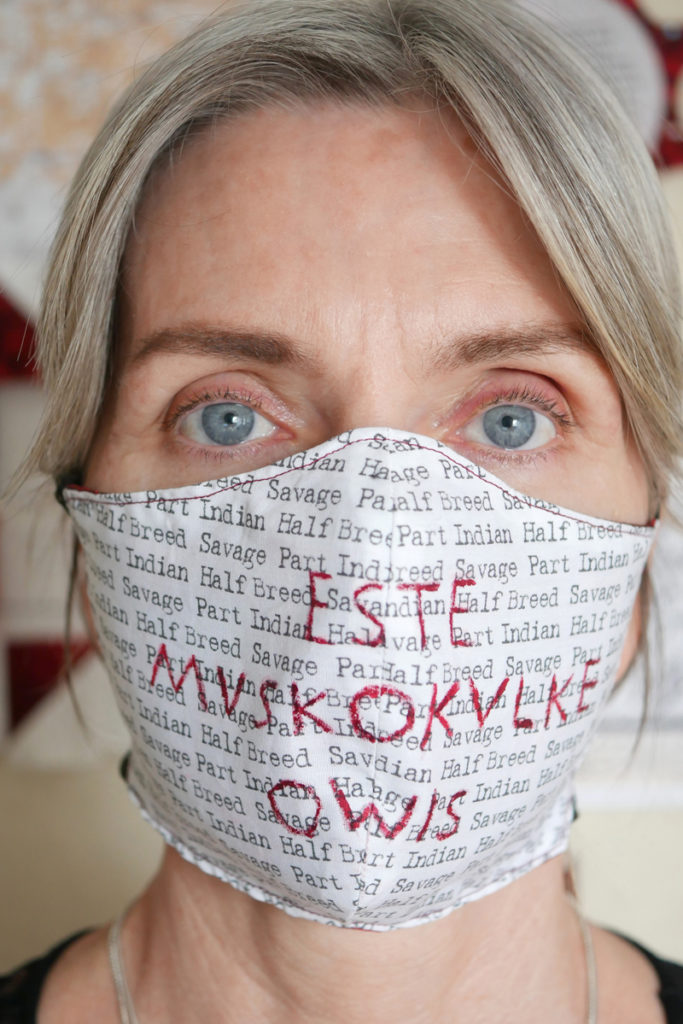
Melinda Schwakhofer -
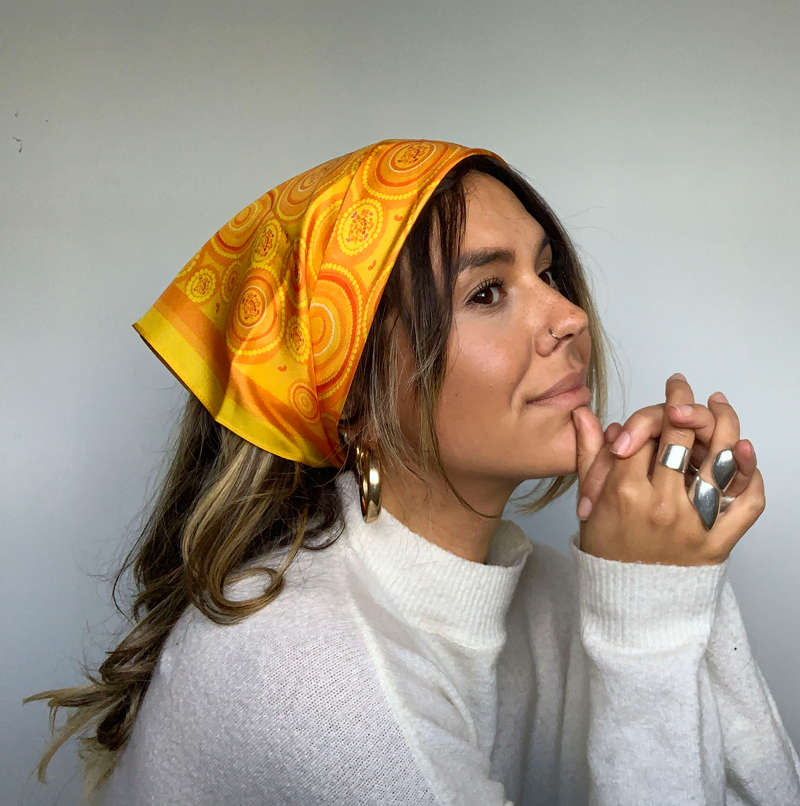
Jasmine Coe
Which important questions has it helped you to get to grips with?
Jasmine: Who I am, what identity means to me, what my values are.
Melinda: Who am I as a Mvskoke person? How am I Mvskoke? I grew up knowing that I have Native American ancestry, but not much more than that. My father, Frank, had chosen to cut himself off from our Mvskoke culture and family as a young man. It was not until I became an adult that I began to explore my background and the culture which had such a deep but, until then, unacknowledged impact on my whole family. In 2008 I consciously began to use artmaking to help me navigate everything I was discovering, both the joyous and the painful sides of that. My artwork became a map to guide me on this journey, which continues.
Tell us more about how issues of race, identity or conflict manifest
Melinda: Identity – or the search for it – is at the core of much of what I do. I recognise that I am at the confluence of many different streams. My Mvskoke heritage mingles with my Austrian-American-English ancestry. Add in lived experience and – just like everyone – my identity is unique yet shares many experiences with millions of other people. It is the paradox of being human – the uniqueness of each one of us in a world where we cannot exist without cooperating. My art reflects this never-ending journey of self-discovery. Also, I cannot help but respond to the world I live in and the events and forces that shape it. I was deeply impacted by the murder of George Floyd. I designed my I Can’t Breathe Covid mask the day after as part of my attempt to process not only the horror of that event but everything that had led to it over many generations. This reaction became more fully developed in my quilt Breathe – I make a direct link between the racism of the USA and the widespread refusal to acknowledge that slavery is at its heart. The same blindness afflicts many Americans when it comes to acknowledging that the so-called American dream is based on two evils – the slavery of Africans and genocide of Native Americans. Until these facts are acknowledged, accepted and understood, America can never be at peace with itself.
Jasmine: Race and identity are the invisible underlying themes of my work; one of the main reasons why I paint. It provides a space to work through conflicts of self-identity and the complexities of being mixed race. As I grew up away from the input of my Aboriginal heritage, identity has been something I have struggled with. Given the traumatic history of when these two cultures met, I find a conflict in identity. The more I understand this history, my personal outcome can feel like two people clashing within one existence. Recently being provided with an alternative perspective from my Wiradjuri heritage about the ongoing effects of the British Empire and colonisation, it becomes confronting and confusing to come to an understanding of your personal history within. Growing up away from my Wiradjuri family and not sharing directly in their experiences, but hearing how colonisation has directly affected them, makes you question how one place you have called home can have had such a destructive outcome on your other home. The process of painting creates a place to work through this, the painting itself becomes the personal resolution. It’s the continuous work in progress of resolving self-identity and total self-acceptance where I can attempt to find peace by internally harmonising and finding strength in both lines of my heritage. Alternative perspectives can be painful and uncomfortable, but they allow for growth and understanding which leads to healing. I take comfort in Wiradjuri values I have learnt – to care for our Earth, a place we have all come from, offering unity and equality.
How do art and activism combine through your work?
Jasmine: My father, Paul Coe, and family in Australia are hugely politically active, and contributed to the establishment of the Aboriginal Tent Embassy in Canberra 1972 – the centre for the fight for basic human rights and justice for Aboriginal and Torres Strait Islanders. He played an important role in founding the Aboriginal Legal Service which has its origins in reacting to police harassment and contributing towards the creation of the Aboriginal Medical Service. It is only recently that Aboriginal people have been allowed to vote. Before the referendum in 1967, Aboriginal people weren’t even considered citizens of their own country; instead categorised alongside the Flora and Fauna Act, essentially considered non-human. For 18 years of my father’s life, he lived under a law that refused to recognise his people as human beings. Activism runs through my father’s family and my art has become a place where I learn about the history of my culture and what my family have stood for. By creating collages combining my work with historical photographs of my family during pivotal moments in Australian history, it becomes personally educational; at the same time an opportunity to relay powerful messages of resistance, pride in culture and strength as a people. Growing up, I didn’t know my father, but my art allows me to learn about who he is, what he stands for, and recognises his amazing achievements in what he has done for his culture and people, while strengthening our bond as father and child.
Melinda: I tend to be somewhat of a ‘lone wolf’ and rather than join big social/protest movements, I undertake socially engaged artmaking. I feel that is a powerful way to explore hidden topics that some people may not want to discuss, to expose erased histories, to uncover the obscured roots of current issues. I find that when people view some of this artwork, it can touch them and invite them to think about their own experiences or reactions to subjects such as racism, colonisation, missing and murdered Indigenous women, and more.
-
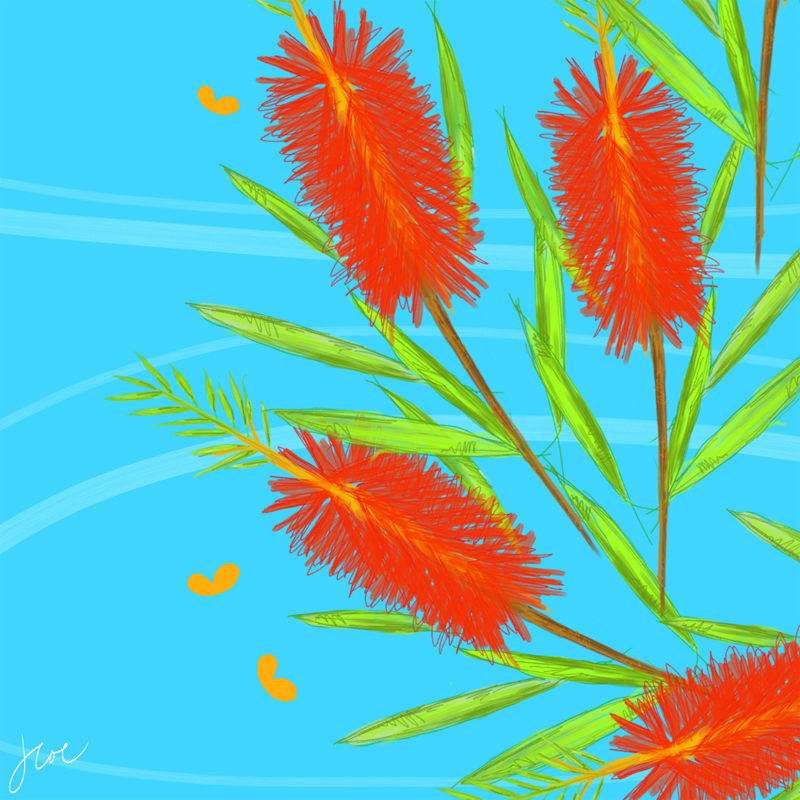
Honeybees and Bottlebrushes by Jasmine Coe who is reminded by honeybees of balance, collective energy, community and the strength of working together with nature. -
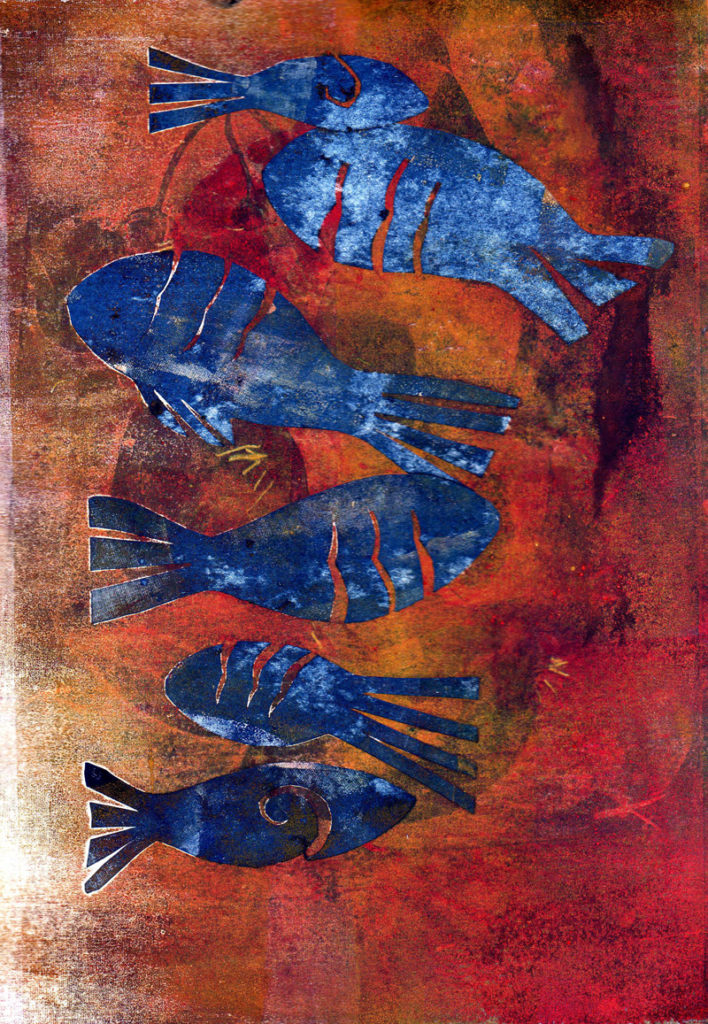
Rvro Holatte – Blue Fish monoprint by Melinda Schwakhofer, who uses cultural iconography relevant to the Mvskoke
How is the art process healing?
Jasmine: You can process traumas, seek clarity and begin to gain an understanding of how life can reflect the creative process. When I first came back from Australia, I used to cry a lot when painting. Allowing myself to feel and let emotion flow freely, painting became a healing process, continuously connecting me to my heritage. The work itself celebrates themes of the natural world. It allows me to reinstate Wiradjuri values; ‘to care for country’.
Melinda: Artmaking is a powerful way to speak about feelings that cannot be easily put into words; to hold together disparate, confusing or conflicting ideas and emotions. I follow threads of half-forgotten memory, tying up loose ends and unpicking and stitching back together the cloth of our history. My artwork is about identity, journey and finding home. Even though I grew up with so much brokenness and disconnection to my Muskogee roots I’m amazed at how much I have been able to recover and reconnect with. I believe many Indigenous people carry deep ancestral knowledge, often as well as trauma. One can’t be found without unearthing the other.
Do you tend to turn to one medium to express a particular theme?
Melinda: My artistic medium is usually guided by the creative idea. Some ideas need to be manifested in textiles, others in paint, others in video. Part of my process is to ask the idea how it needs to come about, to reveal its preferred medium. This often leads me to explore new ways of working. I first found myself as an artist in 1996 when I began quilting. Over the next 20 years I mainly used textiles. Since then, my practice has expanded to include painting, drawing, printmaking, sculpture, and photography – whatever is harmonious with the idea. However, in 2019 I made a big art quilt (Road to Oklahoma). I also rediscovered hand stitching and beading at the start of the pandemic so I am currently spiralling back to textiles.
I also use ‘slow stitch’ as a meditative practice where the process of the stitching is more important than the finished piece.
Jasmine: I mostly paint in acrylic as I find it complementary to my style, being a fast-drying medium. Before painting, I draw or map out my design which becomes a mediative process. Trying not to put too much thought onto the final outcome, I try to be as connected to the creative process as possible. I have always drawn in a particular style since I was younger which I would have described back then as nothing more than doodling. The definition of doodling – to be absent-minded, or to draw without thinking – represents an important part of the creative process. I find it interesting as this becomes a subconscious process connecting you to the innate – an expression that can only come from within and can express or communicate emotions that sometimes language cannot. Now my art is an inclusion of this style that I’d express when younger, so my work is a continual development of self now consciously connected to my Indigenous heritage, allowing me to represent my full self.
Who do you look up to in the art world?
Jasmine: There are many artists that I look up to, but I find the beauty of Aboriginal art, the strength in the storytelling and the continuation of culture the most inspirational of all.
Melinda: Bobby Martin (Mvskoke) – an amazing artist who has been somewhat of a mentor to me. I admire Dr Stacy Pratt (Mvskoke) who writes with such eloquence and insight about Indigenous art. Kristin Gentry is a Choctaw artist, curator and educator; I have a pair of her earrings. I deeply appreciate Bristol’s Rainmaker Gallery – where I have met other Native American artists when they have come over for exhibition openings – and its unique focus on Indigenous art. It’s such an important opportunity for me as a Native artist living in the UK, so physically distant from America. I also met, via the gallery,
Dr Stephanie Pratt, a Dakota art historian. Her story has many similarities to my own. It feels so important to know a Native person who understands where I am coming from and share stories.
Birthright: Indigenous Journeys of Re-connection, 15 September – 29 October
